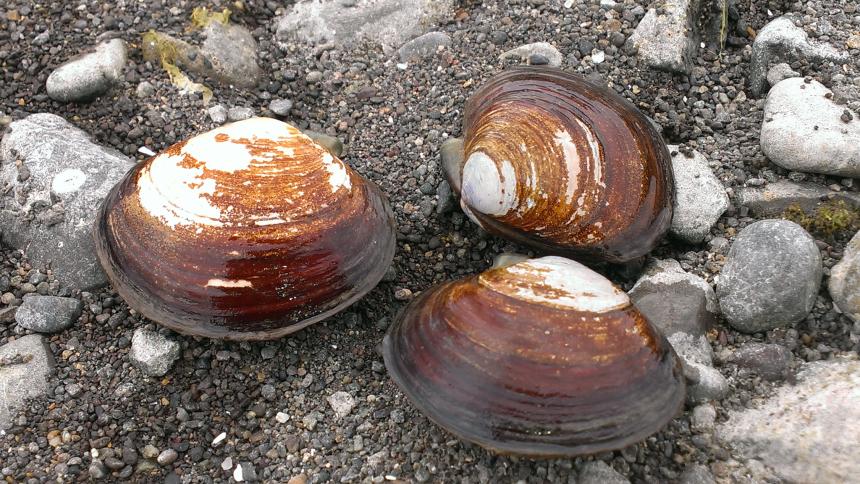Clams can be dug by hand or hand-operated fork, pick, rake, or shovel. Each digger must use a separate container to retain catch. Digging equipment may be shared. Clam holes must be refilled. To reduce clam mortality, please push any undersized clams into the refilled hole. Caution: Always check the local biotoxin status before harvesting via the biotoxin hotline (1-800-562-5632) or www.doh.wa.gov/shellfishsafety.
Description and Range
Physical description
Varnish clams have an oval shaped shell that is thin, flat, and up to 3½ inches long. They have a thick, shiny periostracum, which is the fibrous layer on the outside of the shells. They typically have purple coloration on the interior of the shell.
Varnish clams are buried up to 14 inches deep in sand or gravel substrate.
Geographic range
Varnish clams can be found from the Strait of Georgia, British Columbia to Alsea Bay, OR.
Regulations
Licenses and permits
Anyone digging for clams in Washington must have a valid license that includes shellfish harvest. See the Sportfishing Rules Pamphlet for more information, or visit a license dealer.
Rules and seasons
No minimum size. Daily combined limit of all clam species (excluding HORSE CLAMS and GEODUCKS) no more than 40 clams, not to exceed 10 pounds in the shell.
Recreational clam seasons are beach-specific and may change annually. Check this year’s seasons here: Public clam, mussel, and oyster beaches. Always check the DOH biotoxin status before harvesting.
